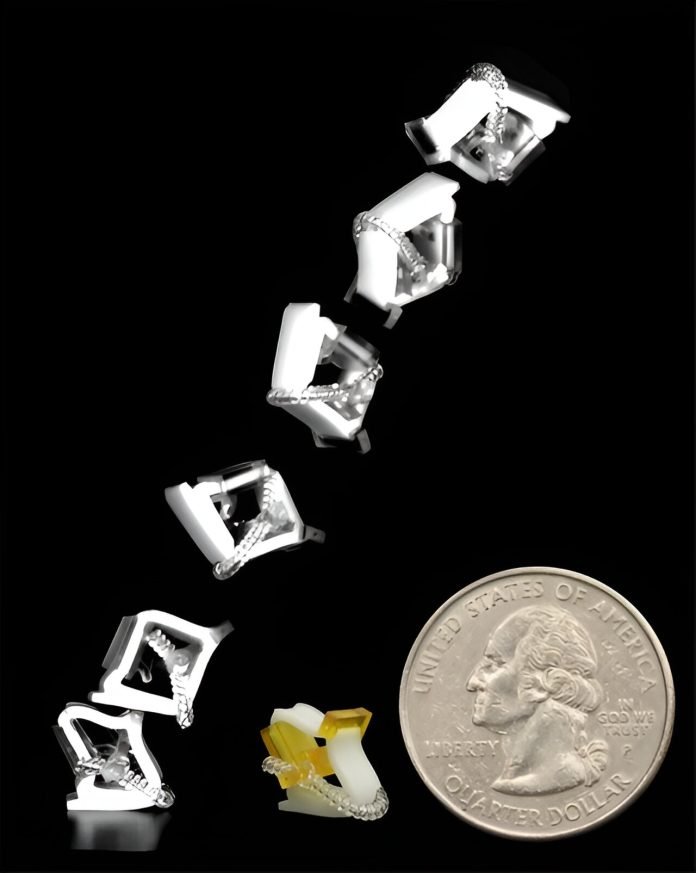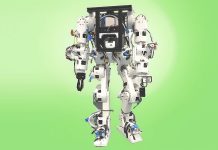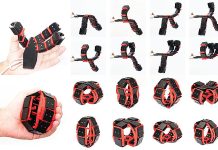
Engineers at the University of Illinois have achieved a remarkable feat in robotics by creating tiny robots that can leap long distances, similar to insects.
This groundbreaking work, detailed in the journal Smart Materials and Structures, marks the first study to document such long-jumping motion in 3D-printed robots of insect size.
Professor Sameh Tawfick, leading the study, heads the Kinetic Materials Research Group. Their focus is on creating materials inspired by biology, including developing artificial muscles.
Tawfick shares that this is the first time long jumping has been demonstrated in robots this small.
This ability gives these tiny robots the advantage of moving purposefully from one point to another, even over terrain that’s rough compared to their size.
Previously, making such small-scale robots capable of impressive jumps was a challenge due to limitations in manufacturing and materials, especially in creating tiny actuators (components responsible for movement).
Tawfick’s team overcame these hurdles using coiled artificial muscle actuators and advanced 3D printing techniques.
The design, inspired by the way a locust jumps, uses a four-bar linkage mechanism. Unlike locusts, which have four independent legs for walking and jumping, the robot uses a single artificial muscle for its jumping motion.
The prototype robot is incredibly light, made of a flexible material called elastomer and powered by an artificial muscle crafted from coiled, heat-treated nylon fishing line.
This innovative approach to miniature robotics was made possible by machines developed in Tawfick’s lab, specifically for producing these small coils.
The team went through 108 different designs, optimizing each one through 3D printing. The lightest robot weighs just 0.216 grams and can jump 60 times its body size in horizontal distance – a remarkable achievement in the field of miniature robotics.
These tiny jumping robots hold great potential for agricultural and maintenance applications. In the future, they could be equipped with sensors to collect data in various environments, such as checking crops or exploring machinery.
Unlike drones, these robots can access locations that are currently difficult to reach, making them valuable for detailed, non-destructive evaluations. They are also cost-effective to produce in large numbers, making them ideal for deploying as a group for extensive sensing tasks.
The team’s next goal is to enhance the robots’ motion planning. This involves ensuring that the robots jump efficiently, conserve battery life, and follow the most effective path.
They also plan to investigate the uncertainties that come with the jumping motion, like variations in landing positions.
Tawfick envisions a future where these robots can carry out specific missions, jumping multiple times to reach a target, collect data, and return. This capability would be a significant step forward in robotic exploration and data gathering.
The study is not just a scientific accomplishment but also a contribution to the broader field of robotics.
Tawfick is excited about the possibility of other researchers using their theoretical model to develop similar robots.
The creation of these long-jumping, insect-scale robots opens up new possibilities in robotics, promising more efficient and adaptable ways to gather information in various environments.
Follow us on Twitter for more articles about this topic.



